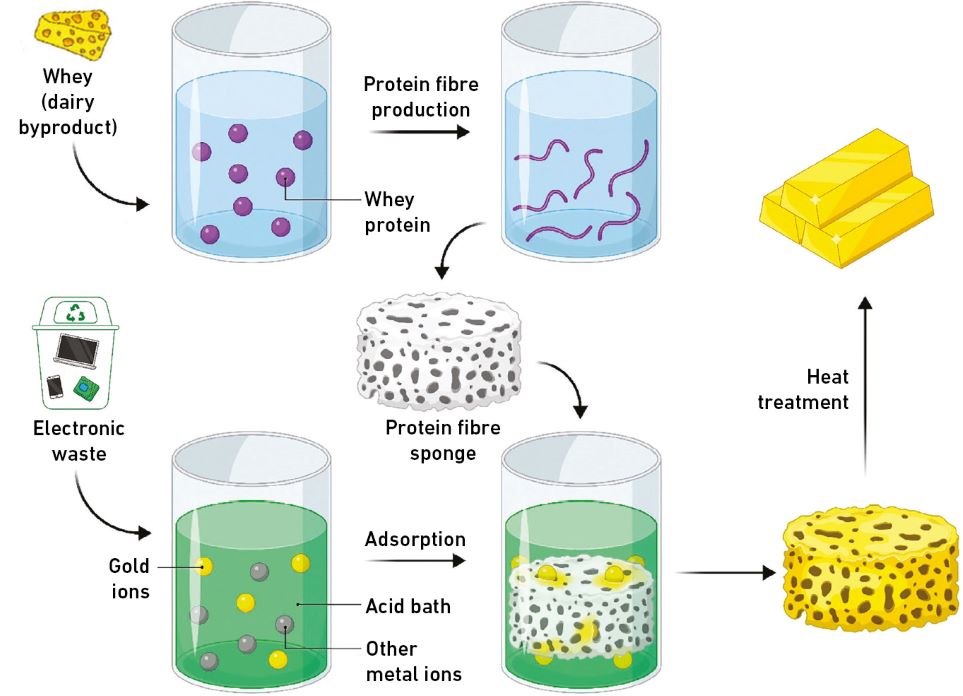How to extract gold from electronics waste
Researchers at the Federal Institute of Technology in Zurich (ETH Zurich), Switzerland, have pioneered an innovative method to extract gold from electronics waste, which turns out to be profitable. Utilizing protein fibril sponges derived from whey, a byproduct of the food industry, the team led by Professor Raffaele Mezzenga achieved remarkable effectiveness in recovering gold from disused electronic devices.
In a lab experiment, Mezzenga and his team successfully and effortlessly retrieved a 22-carat gold nugget weighing 450 milligrams from 20 old computer motherboards, and the process is fully environmentally-friendly, according to a statement issued by ETH Zurich.

The extraction of gold as illustrated by ETH Zurich.
The cost-effective method lies not in transforming elements but in recovering gold from electronic waste using a byproduct of the cheesemaking process. E-waste harbors valuable metals like copper, cobalt, and significant amounts of gold, making its efficient recovery imperative due to the escalating demand for the precious metal.
The conventional recovery methods are energy-intensive and involve the use of toxic chemicals. Professor Mezzenga and his colleagues created instead a sponge from a protein matrix, derived from whey proteins, which literally absorbs the metal from electronics.
The process involves denaturing whey proteins, forming protein nanofibrils in a gel, and subsequently drying the gel to create a sponge. The team salvaged metal parts from old computer motherboards, dissolved them in an acid bath to ionize the metals, and introduced the protein fiber sponge. Gold ions selectively adhered to the protein fibers more efficiently than other metal ions.
More to read:
Scientists develop microbial fuel cell using soil as power source
The researchers heated the sponge, reducing gold ions into flakes, which were then melted down into a 91% gold nugget (22 carats). Not only environmentally friendly, but the technology also proves economically viable, with procurement and energy costs significantly lower than the value of the recovered gold.
Looking ahead, the researchers aim to bring the technology to the market, exploring diverse sources beyond electronics waste, such as industrial waste from microchip manufacturing or gold-plating operations. Additionally, they plan to investigate the use of protein fibril sponges derived from other protein-rich byproducts or waste from the food industry.
This is the first documented eco-friendly and economically viable approach to gold recovery from electronic waste.
The results of the experiment were published in the journal Advanced Materials.
***
NewsCafe relies in its reporting on research papers that need to be cracked down to average understanding. Some even need to be paid for. Help us pay for science reports to get more interesting stories. Use PayPal: office[at]rudeana.com or paypal.me/newscafeeu.







